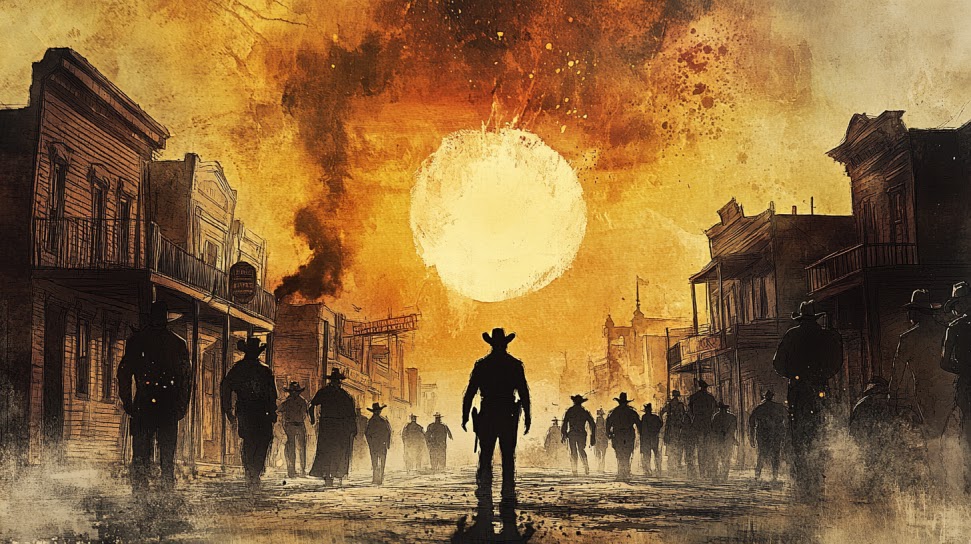
When I was 15, my family uprooted from Elk River, Minnesota, and moved to the strange lands of Santa Fe, New Mexico. I didn’t know it at the time, but that move would throw me into one of the most important training grounds of my life—not in a school, but around the gaming table.
That’s where I first discovered roleplaying. For me and the guys I met, gaming became more than a hobby—it was our mental gym, our dojo. We fought not with fists, but with our wits. We learned to think ahead, to solve problems creatively, to outmaneuver our opponents not just with brute force, but with strategy, psychology, and cunning.
And as I dove deeper into history over the years, I began to see the same patterns in the men who shaped our world.
Take General Belisarius. He didn’t just swing a sword and hope for the best—he engineered siege machines, outplayed his political enemies, and reclaimed Rome through brilliance as much as bravery.
Or Cortés—yes, he fought the Aztecs, but his true genius was in statesmanship. He played rival Spanish factions and native alliances like a master tactician, securing victory not by strength alone but by knowing how to move the pieces on the board.
Kit Carson—half mountain man, half diplomat—understood the land, the people, and the cultures so well he could bend circumstances to his will. And Major Rogers, deep in the northeastern wilderness during the French and Indian War, survived impossible odds by thinking harder and faster than anyone else in the fight.
And these aren’t isolated examples. The pattern repeats through history:
Scipio Africanus, at the Battle of Ilipa, deceived a larger Carthaginian army by reversing his battle line, forcing a collapse of enemy morale.
Hannibal, at Lake Trasimene, used the terrain and fog to ambush an entire Roman army.
Subutai, the Mongol general, didn’t just lead charges—he coordinated entire multi-front campaigns, defeating European powers by thinking weeks ahead.
Skanderbeg held off the Ottomans for decades with guerrilla tactics and superior knowledge of local terrain.
And even a forgotten figure like Eustace the Monk—a Benedictine turned pirate—out-thought larger navies with wind and deception.
These were thinking men of action.
And that’s what the right kind of gaming can forge. Around the table, whether in a Santa Fe basement or an Army barracks, I’ve seen men sharpen their minds and their character through these imaginary battles. I’ve seen young and old alike practice the very skills that history’s great men used: strategic thinking, adaptability, leadership, brotherhood.
Today, too many men are cut off from spaces that forge these qualities. Sports help, sure—but so can games. Roleplaying—especially in something like Man of Ages or PsychScape Historical—gives men a place to test themselves, to bond, to encounter the lessons of history not as dry facts, but as living, breathing challenges. It shows them they, too, can overcome impossible odds—if they can think, and then act.
And yes, this is a space for men. Not because women aren’t welcome, but because men need spaces to sharpen one another without apology. Just as the gym or the dojo does.
That’s the mission behind what I’m building here. Not just a game—but a forge for men of action, in the spirit of Belisarius, Carson, Rogers, and Cortés.
If you feel that hunger—if you want to sharpen your mind and build brotherhood—you’re in the right place. Let’s get to work.
General Belisarius:
Hernán Cortés:
Kit Carson:
Major Robert Rogers:
1. Scipio Africanus at the Battle of Ilipa (206 BC)
Everyone remembers Scipio for beating Hannibal at Zama, but his victory at Ilipa is a masterclass in thinking through a battle. Facing a larger Carthaginian force, Scipio reversed the order of his line during the battle’s opening moments—tricking the enemy into thinking his weak troops were on the wings when actually his strongest legions were. It broke their morale and turned the tide.
→ Battle of Ilipa
Lesson: Deception and anticipation of enemy behavior wins battles before the first sword swings.
2. Hannibal’s use of fog and terrain at Lake Trasimene (217 BC)
Instead of just fighting in the open, Hannibal used the landscape—he laid an ambush along a narrow pass by the lake, trapping a Roman army in fog and rough terrain. Nearly annihilated the Romans without needing a straight-up engagement.
→ Battle of Lake Trasimene
Lesson: Know your environment—let it fight for you.
3. Subutai, Mongol general of Genghis Khan
Subutai wasn’t just a brutal cavalry commander—he was a master of long-range coordination. He used feigned retreats, multi-front deception, and lightning-fast forced marches to outwit Europe’s best armies. His 1241 European campaign saw him trick Polish and Hungarian forces into separate battles, defeating them in detail.
→ Subutai’s European campaign
Lesson: Master of operational strategy—he thought beyond the battlefield, weeks ahead.
4. Skanderbeg (Gjergj Kastrioti), Albanian resistance leader vs. Ottoman Empire
Outnumbered for decades, Skanderbeg used hit-and-run tactics, ambushes, and an intimate knowledge of mountain terrain to tie down massive Ottoman armies. He weaponized mobility and local knowledge, forcing a giant empire into an exhausting stalemate.
→ Skanderbeg
Lesson: Out-think your size and resources—brains beat numbers.
5. Eustace the Monk (1180–1217), Pirate and Mercenary
A Benedictine monk turned pirate who later served as a mercenary admiral. At the Battle of Sandwich, he outmaneuvered larger fleets using wind shifts and deception, almost reshaping the naval balance of power.
→ Eustace the Monk
Lesson: Use what the enemy overlooks—master the elements around you.

